How Implementing a Strong Safety and Health Program Can Improve Employee Retention
Last Updated Oct 10, 2025

Turnover is draining budgets and burning out teams — and most HR leaders aren’t connecting the dots between safety, health, and retention fast enough.
Here’s what’s often missed: employee wellbeing isn’t only about perks. It also requires protecting the body, supporting the mind, and making it easier for people to thrive every day. That means looking beyond compliance and building a culture where physical, mental, nutritional, and sleep health all get the attention they deserve.
This approach is more than feel-good policy. It’s a practical, high-impact retention strategy grounded in what employees need to feel safe, supported, and ready to stay.
Unlock the secrets to healthier employees, safer workplaces, and stronger loyalty — before burnout takes its toll.
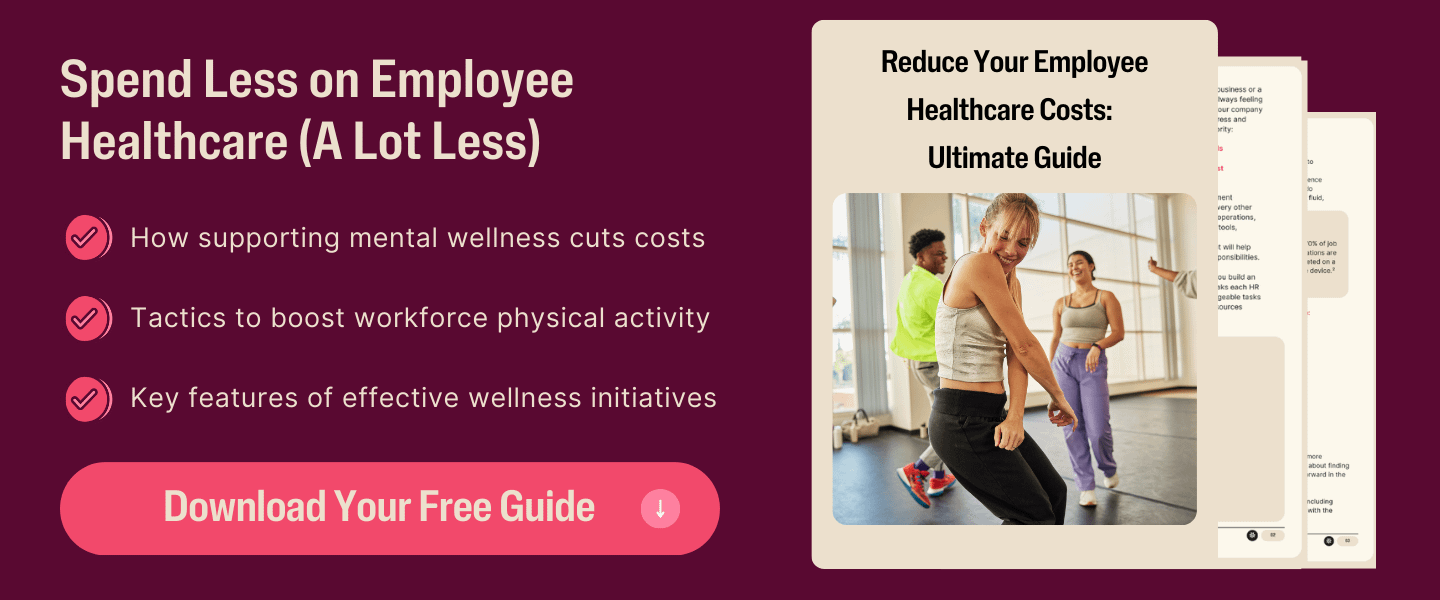
What You’ll Learn:
- The Four Pillars of Worker Health: How physical, mental, nutritional, and sleep health intersect to create a foundation for employee wellbeing — improving focus, morale, and long-term retention when supported through programs like fitness access, counseling, and rest-friendly policies.
- The Two Dimensions of Safety: Why both physical and psychological safety are essential — protecting employees from harm while empowering them to speak up, innovate, and engage without fear, driving stronger performance and trust.
- Health and Safety as Retention Drivers: How wellbeing and safety investments directly reduce turnover, stress, and burnout — with data showing that workplace safety alone explains up to 67% of retention variation and that 73% of CEOs link wellbeing programs to higher retention.
- The Business Case for Wellbeing: Clear ROI evidence that every dollar spent on health and safety returns $4–$6 through lower healthcare costs, fewer injuries, reduced absenteeism, and stronger productivity — making wellbeing both an ethical and strategic advantage.
- How to Measure Impact Effectively: A practical framework for tracking safety, health, and retention outcomes using surveys, incident data, engagement metrics, and predictive analytics — helping leaders quantify impact and continuously improve employee wellbeing programs.
Four Key Pillars of Worker Health
When it comes to employee wellbeing, everything is connected. A great night’s sleep supports sharper thinking. Nutritious meals fuel energy and focus. Physical activity relieves stress. And mental health determines how people show up and engage with their work.
The four dimensions — physical, mental, nutritional, and sleep health — are the foundation of a thriving workforce. Supporting each one doesn’t just improve health outcomes; it strengthens morale, boosts productivity, and helps your people stay longer and feel better.
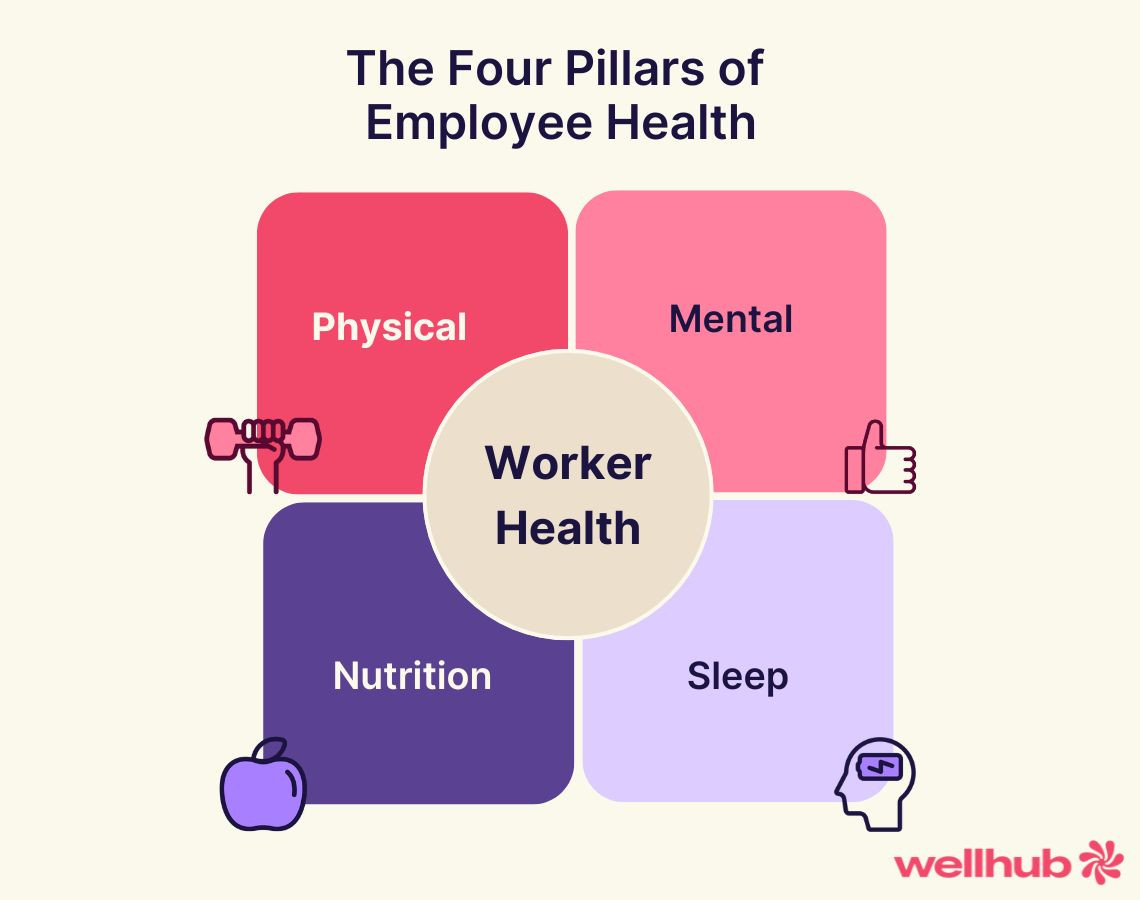
- Physical Health: Strength for Every Shift
Physical health is what keeps your employees moving, focused, and resilient throughout the day. It covers everything from preventing injuries and promoting movement to supporting cardiovascular fitness and overall vitality.
Regular exercise, proper ergonomics, and access to fitness and recovery resources all play a huge role. In fact, 54% of employees say they’re in good physical shape, but time constraints remain the top barrier to doing more,
That’s where supportive programs — like on-demand workouts or gym partnerships — make it easier for employees to stay active on their own terms.
- Mental Health: The Heart of Engagement
Mental wellbeing is the cornerstone of sustainable performance. It’s what helps employees manage stress, stay emotionally balanced, and connect meaningfully with their teams.
Unfortunately, 47% of employees say work stress is degrading their mental wellbeing, making it the leading cause of emotional strain.
Investing in psychological safety, access to counseling, mindfulness resources, and flexible schedules empowers employees to recharge and speak up when they need support. When people feel emotionally safe, they’re more creative, collaborative, and committed — the ultimate retention drivers.
- Nutritional Health: Energy from the Inside Out
Nutrition fuels everything — energy levels, focus, and even mood. Yet 40% of employees say they have good nutrition, while cost and time constraints are the most common barriers to healthier eating habits.
Employers can make a huge impact by encouraging balanced meals, providing nutritious snacks, and offering education around food and hydration. Small steps — like promoting hydration breaks or hosting wellness challenges — show employees you care about their everyday wellbeing, not just their output.
Because when people feel fueled, they perform at their best.
- Sleep Health: The Unsung Hero of Productivity
Sleep might be the most underrated performance enhancer in the workplace. It’s the body’s reset button — critical for focus, recovery, and emotional regulation.
Yet 71% of workers sleep less than seven hours per night, and more than half lose sleep due to stress and anxiety.
Organizations that promote healthy sleep — through reasonable workloads, flexible scheduling, and wellness education — help employees recover more fully. That leads to fewer mistakes, better moods, and higher retention.
Because well-rested employees don’t just show up — they shine.
The Two Types of Worker Safety
When we talk about worker safety, we’re talking about two powerful, connected forces: physical safety and psychological safety.
Both are essential to protecting your people — and together, they create the foundation for lasting wellbeing, engagement, and retention.
Physical Safety: Protecting the Body
Physical safety is the most visible form of protection at work — it’s what keeps your people free from injury and harm. It covers everything from slips and falls to chemical exposure, machine safety, and ergonomic setup.
A physically safe workplace doesn’t happen by accident. It’s built through:
- Regular risk assessments and safety audits
- Training on safe equipment use and emergency procedures
- Proper ergonomics and workspace design
- Access to personal protective equipment (PPE)
- Compliance with OSHA and other safety standards
These steps may sound procedural, but their impact is deeply personal. When employees know their employer actively protects their health, they respond with trust, focus, and loyalty. In fact, companies that prioritize physical safety tend to see fewer injuries, lower absenteeism, and stronger morale — all key ingredients in long-term retention.
Simply put: when people feel physically safe, they can focus on doing their best work.
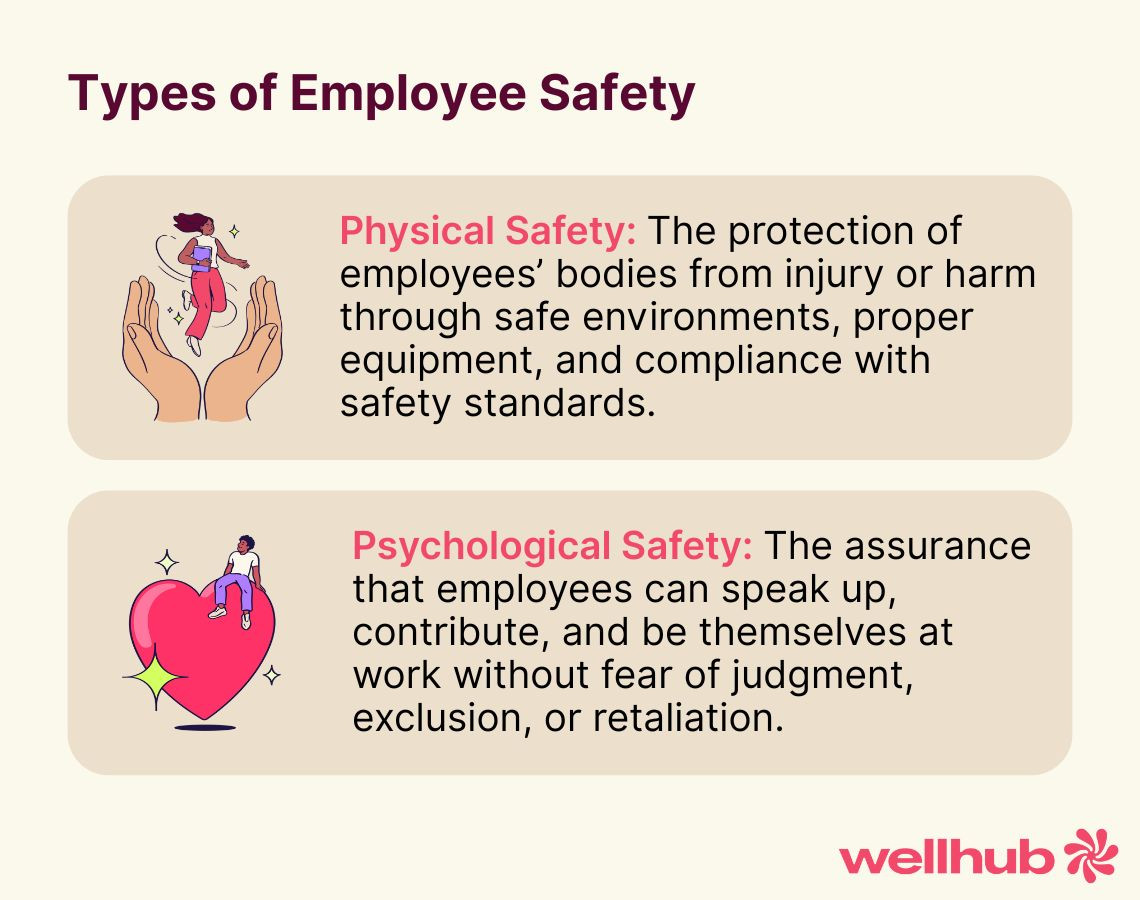
Psychological Safety: Protecting the Mind
If physical safety protects the body, psychological safety protects the spirit. It’s the assurance that employees can speak up, share ideas, and be their authentic selves — without fear of judgment, ridicule, or retaliation.
Psychological safety grows in workplaces where leaders:
- Encourage open, respectful communication
- Respond to mistakes with curiosity instead of criticism
- Build inclusion into every meeting and policy
- Create channels for confidential feedback
- Support mental health through wellbeing programs and flexibility
This kind of environment helps people perform better. When employees feel safe to be honest and vulnerable, they take more initiative, collaborate more effectively, and innovate more freely.
And here’s the critical link: without psychological safety, physical safety programs can’t reach their full potential. Employees who are afraid to speak up won’t report hazards or near-misses, leaving risks unresolved.
That’s why both forms of safety must work hand in hand. Together, they form the backbone of a culture where employees feel genuinely protected — and want to stay.
Why Worker Health and Safety Is Critical to Employee Retention
Imagine this: you walk into work every day confident that your organization has your back — not just when it comes to pay or perks, but your safety. That confidence, that sense of protection, is one of the strongest predictors of whether someone chooses to stay with a company.
Worker safety is more than compliance. It’s a message that says “you matter.” Employees who feel safe at work are more satisfied, more engaged, and more loyal. They’re not distracted by worry or stress — they’re focused, productive, and proud to be part of an organization that values them.
According to Wellhub’s Return on Wellbeing 2025: The CEO Edition, 66% of CEOs agree or strongly agree that their employees would consider leaving if their company didn’t prioritize wellbeing. And since safety is the foundation of wellbeing, it’s clear: protecting your people protects your talent pipeline.
When employees feel both physically safe and mentally supported, they show up differently — and they stay longer. Here’s why:
- Health and safety build trust. When leadership invests in wellbeing programs, ergonomic improvements, or mental health resources, employees see those as proof that their organization values them as people, not just performers. That creates a deep sense of belonging and commitment.
- They reduce stress, injury, and burnout. A workplace that proactively manages hazards, promotes work-life balance, and offers mental health support helps employees stay healthy — and prevents the exhaustion and anxiety that often lead to turnover.
- They reflect strong leadership. When employees see health and safety prioritized, they interpret it as a sign of competent, caring leadership. It says, “We have things under control, and we care about your wellbeing.” That sense of stability inspires pride and loyalty.
- They encourage engagement and performance. Employees who feel good physically and mentally have more energy, creativity, and motivation — and are less likely to disengage or look elsewhere.
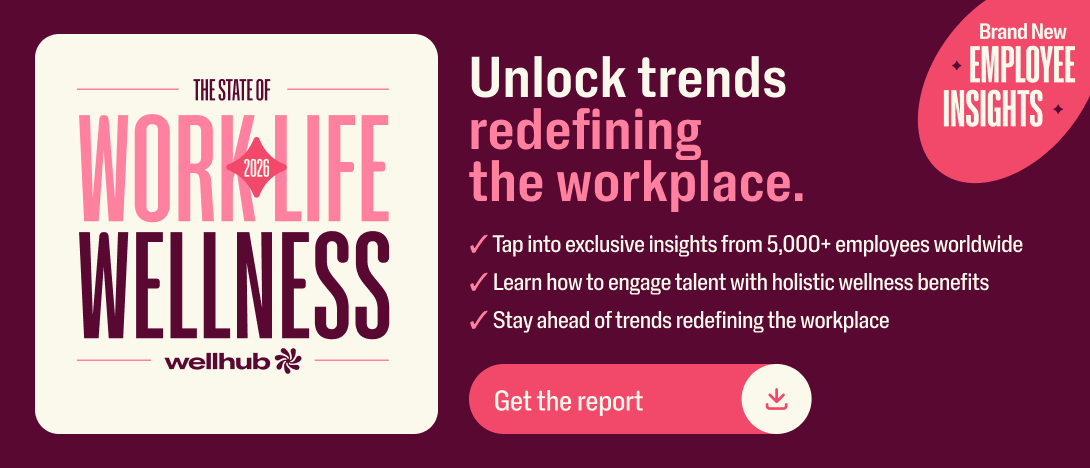
In fact, 73% of CEOs say their wellbeing programs improve talent retention — and wellbeing starts with a safe, healthy work environment.
This link is measurable.
- Studies show that workplace safety explains roughly 67% of employee retention variation, underscoring its powerful influence on turnover reduction.
- In high-risk industries, safety improvements have been shown to cut turnover by up to 35%.
- Companies with strong health and safety programs report fewer injuries, lower absenteeism, and higher morale, which compound into stronger engagement and loyalty.
Simply put: when employees feel well and work safely, they stay.
The Business Case for Ensuring Worker Health and Safety
Investing in worker health and safety is both a moral commitment and a smart business strategy. When employees feel protected, supported, and healthy, they bring their best energy and focus to work. That sense of care and confidence elevates engagement, productivity, and loyalty across the entire organization.
Health and safety strengthen every part of a company — from the bottom line to the employer brand — by creating conditions where employees can perform at their highest level and remain committed for the long term.
Economic Benefits: Health and Safety Pay for Themselves
Healthy and safe workplaces generate measurable financial returns. Every dollar invested in health and safety can yield a return of $4 to $6 through reduced medical costs, fewer injuries, lower workers’ compensation claims, and minimized legal exposure.
Organizations that make health and safety a core part of operations benefit from:
- Lower healthcare and insurance costs as chronic and injury-related claims decline
- Reduced absenteeism as employees experience better physical and mental health
- Greater operational continuity with fewer interruptions and staffing gaps
- Higher ROI due to stronger resilience and consistent workforce performance
The data confirms that caring for employees delivers meaningful economic value and long-term sustainability: 82% of CEOs report a positive ROI from their wellness programs, and 78% experience returns greater than 50%.
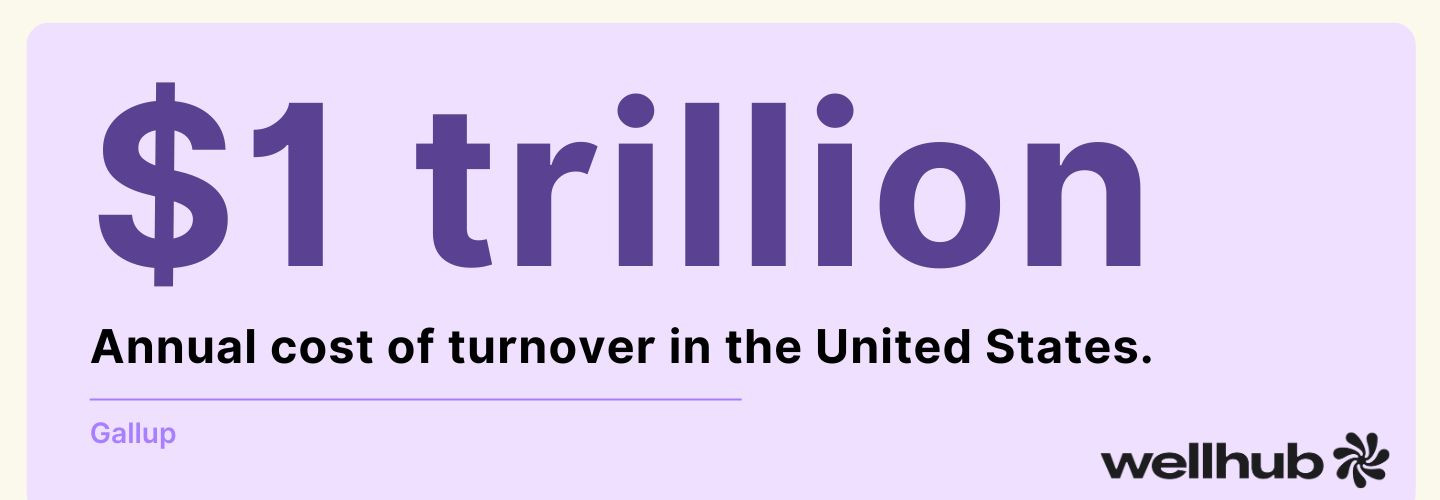
Productivity and Operational Efficiency
Healthy and safe workplaces enhance focus, collaboration, and output. When employees trust that their wellbeing matters, they engage more fully with their work and their teams.
The results are clear:
- Fewer accidents and injuries across the organization
- Lower absenteeism and presenteeism as employees maintain better health
- Higher energy, engagement, and performance across every department
- More consistent productivity supported by physical and psychological safety
Healthy, supported employees sustain their performance, contribute more effectively, and strengthen the overall efficiency of business operations.
Employee Morale and Retention
Health and safety are clear signals of an organization’s values. Employees who experience a workplace that prioritizes their wellbeing develop lasting trust and connection.
Environments built on wellbeing and safety foster:
- Higher engagement and satisfaction among employees
- Lower turnover as workers feel secure and valued
- Stronger culture rooted in collaboration, respect, and belonging
- Greater stability and continuity through improved retention
A culture that values health and safety nurtures pride and commitment among employees, leading to stronger teams and long-term loyalty.
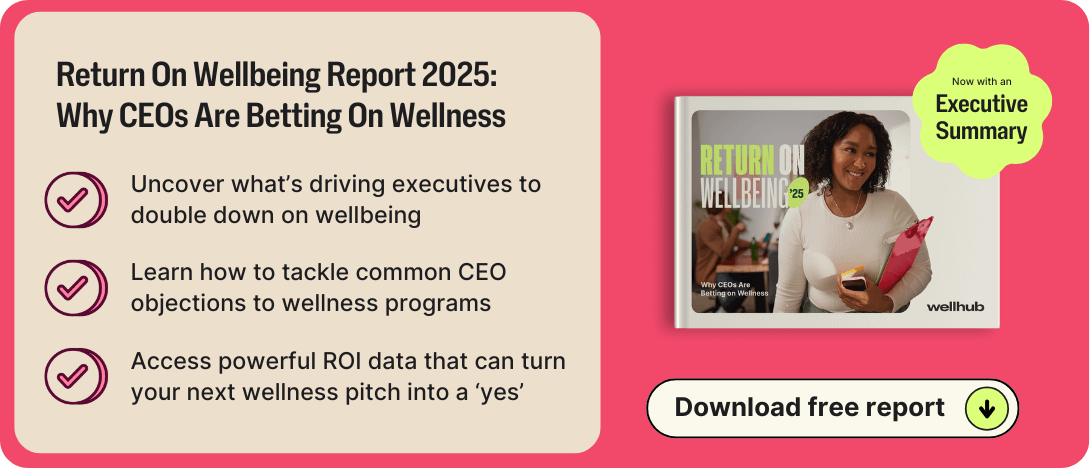
Key Aspects of a Workplace Health and Safety Program
Integrating worker health and safety into business strategy creates a clear competitive edge. It enhances organizational reputation, attracts top talent, and builds lasting trust with customers and partners.
Each investment in employee wellbeing — from ergonomic design and mental health resources to flexible scheduling and healthy lifestyle programs — reinforces a culture of care and accountability. Employees who feel well and safe become the strongest ambassadors for the company’s brand and mission.
- Proactive Risk and Health Assessments
Understanding what puts your employees at risk is the first step toward preventing harm — whether that risk comes from machinery, work stress, poor ergonomics, or unhealthy routines.
Ask yourself: What physical, psychological, or environmental hazards exist in your workplace right now? How might they affect employees’ safety, mental health, or overall wellbeing?
This process isn’t a one-time audit. It’s continuous. As your workplace evolves, new risks can emerge — from increased workloads to new technologies to environmental changes.
A few practical steps:
- Conduct regular physical and environmental risk assessments.
- Include questions about health, stress, and fatigue in your employee surveys.
- Encourage open feedback loops so employees can identify both safety concerns and wellbeing stressors.
Employees often see risks leaders don’t. Whether it’s equipment that feels unsafe or chronic stress caused by workload imbalance, these insights are invaluable.
- Hazard and Health Risk Mitigation
Once you know the risks, take decisive steps to reduce or eliminate them. Mitigation should cover both physical hazards and health-related risks such as burnout, poor nutrition, or fatigue.
Here’s how this might look in action:
- Physical Safety: Install protective barriers, replace unsafe equipment, improve lighting, or upgrade ventilation systems.
- Ergonomics: Provide adjustable desks, proper seating, and training on posture and movement.
- Mental Health: Offer mindfulness breaks, manageable workloads, and access to counseling or mental health benefits.
- Nutrition and Sleep: Provide healthy food options in break rooms, hydration stations, and education around sleep hygiene.
Prevention is the most powerful form of protection. Every investment in healthier work conditions reduces injuries, stress, absenteeism, and turnover.
- Incident and Health Concern Reporting
Even with the best systems in place, incidents and health concerns will occasionally arise. A clear reporting process ensures quick response and continuous learning.
Encourage employees to report:
- Workplace accidents or near-misses
- Physical or ergonomic discomfort
- Signs of burnout, fatigue, or mental distress
- Health or environmental hazards such as poor air quality or extreme temperatures
Reports should include:
- Date and time
- Location
- Individuals involved or affected
- Description of the event or concern
- Immediate actions taken
- Recommended follow-up steps
Analyzing this information helps identify patterns and gaps that need attention. Some incidents may also require formal reporting to OSHA or other agencies, depending on the situation.
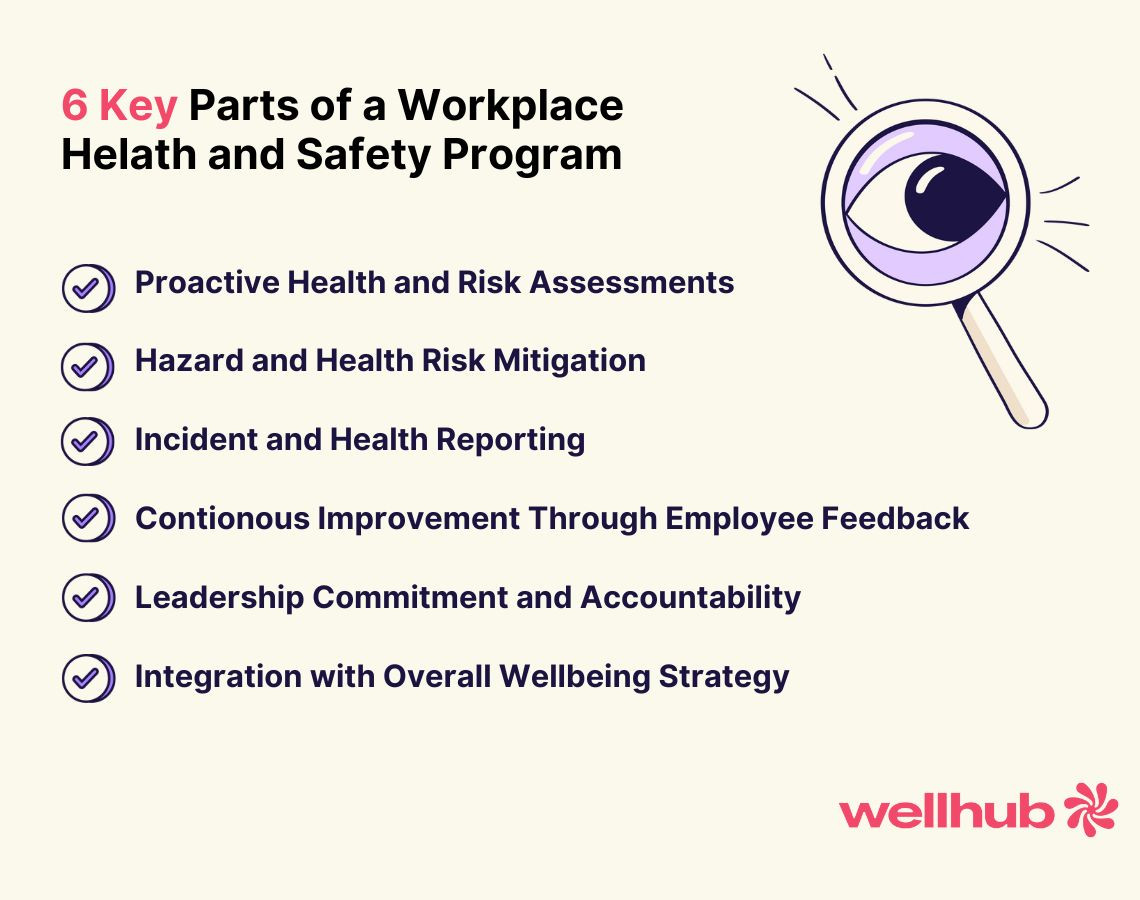
- Continuous Improvement Through Employee Feedback
Health and safety are living, evolving priorities. What works today might need adjustment tomorrow.
Review data regularly, listen to employee feedback, and stay aligned with new regulations and wellness research. Continuous improvement includes:
- Updating procedures and training materials based on recent incidents or health trends.
- Tracking engagement in wellness programs to identify barriers or underused resources.
- Benchmarking your performance against industry standards.
Make iteration part of your culture. Employees will notice when leadership actively learns, adapts, and invests in their wellbeing — and that fosters long-term trust and retention.
- Leadership Commitment and Accountability
A health and safety culture starts — and succeeds — with leadership. When executives and managers model safe, healthy behaviors, the rest of the organization follows.
Leadership accountability should include:
- Regular communication about health and safety priorities.
- Transparent reporting of progress and outcomes.
- Participation in wellbeing and safety programs.
- Clear responsibilities for managers to support employee health proactively.
From walking meetings and ergonomic check-ins to recognizing employees who champion safety practices, leadership visibility matters. When everyone — from the CEO to the newest hire — treats health and safety as a shared responsibility, it becomes a defining part of company culture.
- Integration with Overall Wellbeing Strategy
The most effective programs treat safety and health as inseparable parts of a single wellbeing strategy. When physical safety protocols work in tandem with initiatives supporting mental health, nutrition, and sleep, employees experience true whole-person care.
Integrate your program with:
- Wellness platforms like Wellhub that give employees access to fitness, mindfulness, and nutritional resources.
- Flexible scheduling policies that encourage rest and work-life balance.
- Wellbeing communication campaigns that make health and safety visible, relatable, and actionable across the company.
Health and safety are about more than compliance — they’re about care. When your employees see that care in action, they feel valued, supported, and ready to give their best every day.
How to Measure the Impact of Health and Safety on Retention
You can’t manage what you don’t measure — and that applies equally to employee health and workplace safety. To understand how your programs influence retention, you need to track both the numbers and the stories behind them.
Health and safety shape the employee experience at every level. By measuring the right indicators — from incident rates to stress levels to engagement — you reveal how a healthier, safer culture keeps your workforce stable, energized, and loyal.
The most effective measurement strategies combine hard data with human feedback. Together, these insights paint a complete picture of how health and safety initiatives influence satisfaction, trust, and intent to stay.
Below are key methods to evaluate your impact across both dimensions of wellbeing:
- Employee Health, Safety, and Wellbeing Surveys
Start by listening to the people who live your culture every day — your employees. Surveys can measure how safe, healthy, and supported they feel at work.
Include questions that assess:
- Perceptions of workplace safety and leadership accountability
- Mental health, stress levels, and burnout risk
- Physical wellbeing and energy throughout the workday
- Sleep quality and work-life balance
- Confidence in health and safety policies
Analyze results alongside engagement and retention data. You’ll likely see strong correlations between positive wellbeing scores and higher intent-to-stay metrics. When employees believe their company genuinely prioritizes their health and safety, they’re far more likely to remain long term.
- Retention and Turnover Metrics
Track retention data before and after implementing new wellbeing or safety programs to measure their impact. For instance, monitor turnover following:
- A new ergonomic workstation rollout
- Launch of a mental health resource
- An updated flexible scheduling policy to support rest and recovery
These numbers quantify ROI and demonstrate how improvements to physical and mental health environments translate to stronger loyalty and lower turnover.
Tracking retention trends helps leadership see the value of every initiative — from hydration challenges to new safety training — in keeping great people on board.
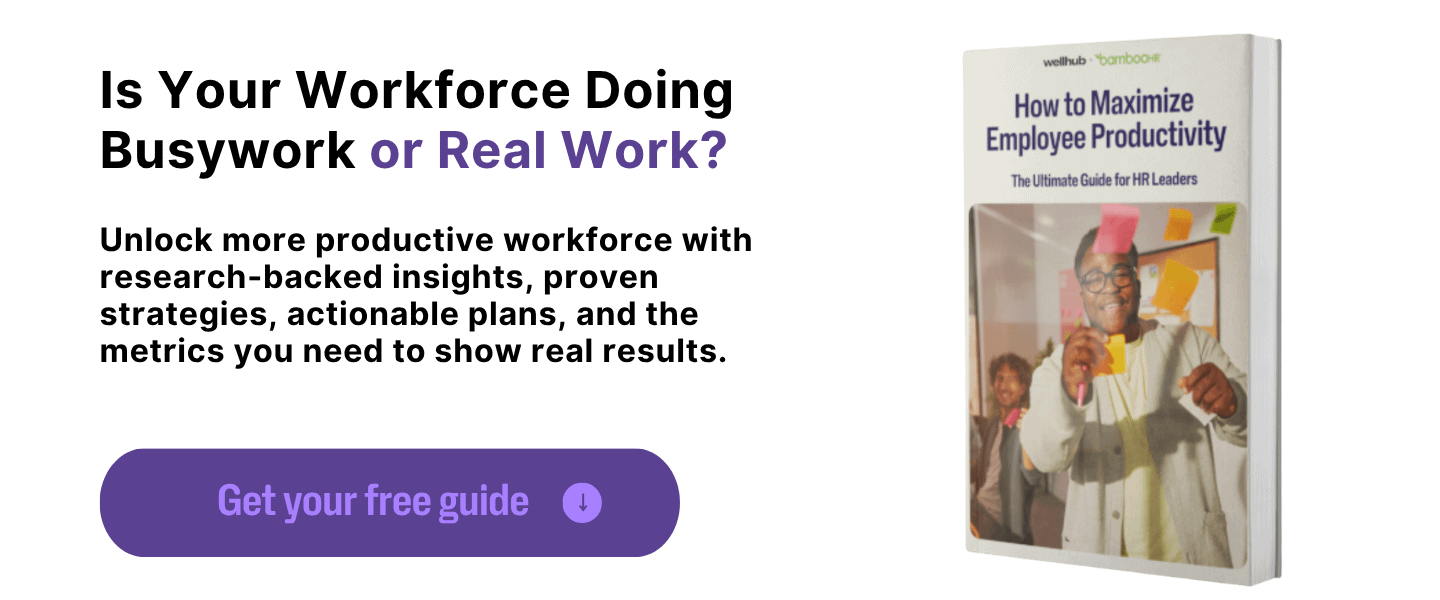
- Safety and Health Incident Rates
Monitor both leading and lagging indicators across safety and health performance.
- Leading indicators: Near-misses, ergonomic assessments, participation in health screenings, or usage of wellbeing tools.
- Lagging indicators: Total recordable incident rates (TRIR), injuries, absenteeism, and chronic illness claims.
Declining incident and injury rates signal an environment where employees feel secure and supported. Rising participation in wellbeing programs shows that employees trust and engage with the organization’s health strategy.
When employees stay healthier — physically and mentally — absenteeism drops, engagement rises, and retention strengthens.
- Behavioral and Participation Metrics
Behavior is one of the clearest indicators of culture. Employees who actively participate in wellness programs, report safety issues, or suggest health improvements show ownership and commitment.
Track participation rates in:
- Wellness programs, gym memberships, or fitness challenges
- Health screenings, sleep or nutrition workshops
- Mental health resources such as counseling or mindfulness sessions
- Safety trainings and hazard reporting initiatives
High participation signals trust and engagement — two major drivers of retention. When employees see that their organization supports their wellbeing, they naturally give more back.
- Correlation and Predictive Analysis
Use analytics to connect the dots between health, safety, and retention outcomes. Recall that up to67% of retention variability can be explained by workplace safety factors, and similar analyses reveal strong predictive links between wellbeing metrics and long-term engagement.
Combine safety and health data with HR analytics to understand:
- How changes in wellbeing scores predict turnover or absenteeism
- Which departments or teams benefit most from wellness investments
- How program participation correlates with satisfaction, productivity, or referrals
These insights make it possible to forecast retention outcomes and guide smarter investment in health and safety programs.
- Employee Engagement and Morale Scores
Health, safety, and engagement are deeply interconnected. Engagement surveys, pulse checks, and psychological safety assessments can reveal how supported and valued employees feel.
Key indicators include:
- Emotional wellbeing and resilience
- Trust in leadership communication
- Sense of belonging and inclusion
- Balance between work demands and recovery
Healthy, well-rested employees report higher engagement and stronger motivation. Over time, those positive experiences become the foundation of loyalty.
- Health and Safety Program Utilization Metrics
Track how often employees use the resources available to them. Utilization data helps measure both impact and accessibility.
Metrics to monitor include:
- Participation in fitness or wellbeing platforms like Wellhub
- Use of counseling or mental health services
- Enrollment in sleep, nutrition, or mindfulness programs
- Attendance at health and safety trainings
- Uptake of flexible or hybrid work options
High usage rates show that your programs are relevant and accessible — a critical signal that your initiatives are meeting real employee needs.
Tools and Best Practices for Measuring Health and Safety Impact
To get meaningful insights, use systems that make health and safety data easy to capture, analyze, and act on:
- Integrated wellbeing platforms to track participation in physical, mental, nutritional, and sleep programs.
- Safety management systems for real-time reporting of incidents and compliance activities.
- Regular audits and surveys to align with regulatory requirements and employee expectations.
- Cross-functional collaboration between HR, Safety, and Wellbeing teams to share insights and align goals.
- Employee feedback loops that turn data into dialogue — closing the loop by showing how feedback drives change.
A measurement framework built around both numbers and narratives reveals not only whether your programs work, but why they matter to employees.
Strengthen Retention With a Comprehensive Safety and Wellness Program
When workers lack support for their health and safety, they burn out, disengage, or leave. Stress, poor sleep, nutrition barriers, and unsafe conditions all chip away at trust, morale, and performance.
An employee wellbeing program addresses these issues head-on. It gives your team access to tools that support physical, mental, nutritional, and sleep health — the four key drivers of long-term wellbeing. According to Wellhub’s Return on Wellbeing 2025, 73% of CEOs say their programs improve retention, and 67% report lower absenteeism. That’s because when people feel safe and supported, they stay focused, energized, and committed.
Speak with a Wellhub Wellbeing Specialist to strengthen employee health, safety, and retention with a wellbeing program that works.

Company healthcare costs drop by up to 35% with Wellhub*
See how we can help you reduce your healthcare spending.
Category
Share

The Wellhub Editorial Team empowers HR leaders to support worker wellbeing. Our original research, trend analyses, and helpful how-tos provide the tools they need to improve workforce wellness in today's fast-shifting professional landscape.
Subscribe
Our weekly newsletter is your source of education and inspiration to help you create a corporate wellness program that actually matters.
Subscribe
Our weekly newsletter is your source of education and inspiration to help you create a corporate wellness program that actually matters.
You May Also Like

Corporate Wellness Trends HR Must Know for 2026 | Wellhub
See the top 2026 wellness trends shaping performance, retention, and culture—plus how HR can build a unified, ROI-driven wellbeing strategy.

Wellness Points Programs: Boost Employee Health & Engagement | Wellhub
Turn your workplace wellness strategy around with a points program that rewards healthy behavior with perks, from extra time off to gift cards.

Employee Financial Wellness Programs: Ultimate HR Guide | Wellhub
Create an effective financial wellness program that supports your employees in their financial needs, boosting productivity and retention.